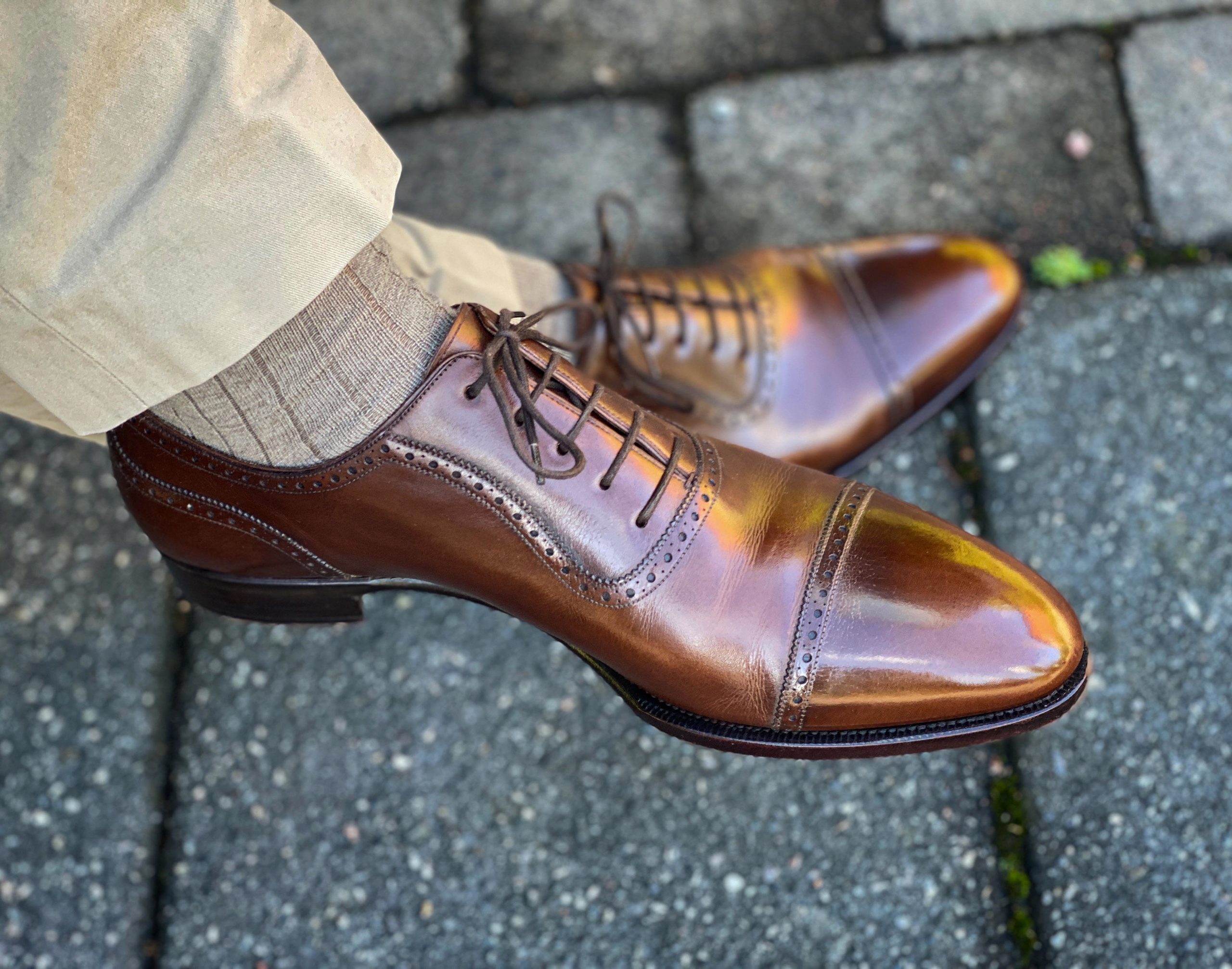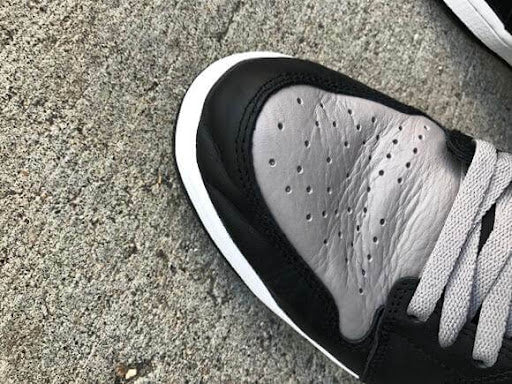Introduction: The Dilemma of Creased Shoes
If you’re a shoe enthusiast or a fashion lover, you’ve probably faced the frustrating issue of creased shoes. Whether it’s your favorite pair of sneakers, dress shoes, or even boots, creasing can be disheartening, especially when it affects their appearance. But why exactly do shoes crease when we walk?
In this comprehensive guide, we’ll explore the causes of shoe creasing, the real-world impacts, and practical tips to minimize it. By the end, you’ll have a deeper understanding of how shoe creasing occurs and how to keep your footwear looking fresh and new.
Understanding Shoe Creasing
What Causes Shoes to Crease?
Shoes crease primarily due to the bending of materials as we walk. The most significant factors contributing to this creasing include:
- Material Composition: Different shoe materials react differently to pressure and movement. For example, leather is more prone to creasing compared to synthetic materials.
- Foot Structure: High arches or flat feet can cause uneven pressure, leading to creasing in specific areas of your shoes.
- Fit and Size: Shoes that are too tight or too loose will crease more easily. A proper fit helps distribute pressure evenly.
Real-World Footwear Experience: A Case Study
Let’s take a look at Laura, a passionate sneaker collector. Laura invested in a premium pair of leather sneakers for her wardrobe. After a few weeks of regular wear, she noticed significant creasing, especially near the toe box. Confused about the wear and tear on her new shoes, she reached out to fellow sneaker enthusiasts on social media.
Many shared similar experiences, explaining that leather shoes often crease naturally due to the material’s properties. Others suggested she could minimize creasing by using shoe trees to maintain shape and prevent the leather from bending too much. Laura took their advice and invested in a pair of cedar shoe trees, which helped maintain her sneakers’ shape during off-hours.

Impact of Creased Shoes on Fashion and Professional Image
The Fashion Perspective
Creased shoes can change your overall look. While some people may see creased shoes as a sign of character or casual style, others may view them as a lack of attention to detail. In the fashion world, it’s crucial to maintain the integrity of your footwear, as shoes can make or break an outfit.
For example, consider a well-tailored suit paired with creased shoes. It can distract from the polished appearance of the outfit, leading to a less professional look. Therefore, understanding and addressing shoe creases is essential for fashion enthusiasts.

The Professional Image
In a professional setting, the state of your shoes can significantly impact your image. Employers and colleagues often subconsciously judge professionalism based on footwear. Creased shoes may give the impression of a rushed or careless approach.
In high-stakes presentations or meetings, showcasing well-maintained footwear can enhance your confidence and positively influence others’ perceptions. Thus, addressing shoe creasing is not just about aesthetics; it’s often about self-presentation.
Comparison Table: Types of Shoe Materials and their Creasing Tendencies
| Material | Creasing Tendency | Maintenance Difficulty | Examples |
|---|---|---|---|
| Leather | High | Moderate | Dress shoes, boots |
| Synthetic | Low | Easy | Sneakers, athletic shoes |
| Canvas | Moderate | Easy | Casual sneakers |
| Suede | High | High | Casual shoes, some boots |

Tips to Prevent Shoe Creasing
1. Choose Quality Materials
Investing in high-quality shoes often means selecting materials that are more durable and less prone to creasing. Look for shoes made from full-grain leather, as they tend to maintain their shape better than lower-quality materials. Additionally, high-quality synthetic materials can also offer good resistance to creasing while being easier to care for.

2. Ensure Proper Fit
Shoes that fit well reduce the chances of creasing. When trying on shoes, walk around to ensure they aren’t too tight or loose. Opt for shoes that allow slight movement of your toes without causing discomfort, as tight shoes can lead to accelerated creasing.
3. Use Shoe Trees
As Laura discovered, shoe trees are an excellent investment for preserving the shape of your shoes. These inserts help maintain the structure of shoes when not being worn, reducing the likelihood of creasing. Be sure to choose cedar shoe trees, which also help absorb moisture and odor.

4. Rotate Your Footwear
Wearing the same shoes daily can cause them to crease more quickly. If you rotate your footwear, it gives each pair a chance to rest, helping them retain their shape and appearance. Consider having at least two or three go-to pairs for daily wear.
5. Clean and Condition Regularly
Keeping your shoes clean and conditioned helps maintain the integrity of the material. Use a soft brush or cloth to remove dirt and grime, and apply a suitable conditioner for leather shoes to keep them supple and reduce the risk of creasing.

Product Highlight: Shoe Care Essentials
Top Products for Preventing Shoe Creasing
Here are some highly recommended products you can incorporate into your shoe care routine:
- Shoe Trees: Brands like Woodlore offer excellent cedar shoe trees that help maintain shoe shape.
- Leather Conditioner: Bickmore’s Bick 4 Leather Conditioner is a great option for keeping leather supple.
- Waterproof Spray: For those living in wet climates, a good waterproof spray, like Nikwax, can help protect against moisture damage.
- Shoe Cream: Using a shoe cream can restore color and provide a protective layer to prevent creasing.
Pros and Cons of Shoe Creasing

Pros
- Character: Some people appreciate that creased shoes show wear and add character.
- Natural Look: In certain styles, like casual sneakers, creasing can provide a relaxed, lived-in appearance.
Cons
- Aesthetic Issues: Creased shoes can detract from your overall fashion sense and make you look less polished.
- Durability Concerns: Excessive creasing can lead to material damage over time, affecting the lifespan of your shoes.

Frequently Asked Questions (FAQs)
1. Why do my shoes crease in the toe area?
The toe area is often subjected to the most bending during walking, which leads to creasing. Shoes that are too tight can exacerbate this problem.
2. Can I prevent creasing in all types of shoes?
While you can minimize creasing in most shoes, materials like leather and suede are more prone to creasing due to their natural properties.
3. Is there a way to remove creases from shoes?
You can use steam to help reduce creases. Hold the shoe above steaming water or use a steam iron (with caution) to gently loosen the material, then reshape using shoe trees.
4. Are there specific shoe brands that resist creasing better?
Brands known for using high-quality materials and craftsmanship, such as Allen Edmonds or Red Wing, often create shoes that resist creasing better than fast-fashion brands.
5. Do shoe protectors really work?
Shoe protectors can help many shoes withstand dirt, moisture, and potential damage, indirectly helping to reduce creasing over time by maintaining the shoe’s integrity.
6. How often should I clean and condition my shoes?
It’s best to clean and condition leather shoes regularly, about once a month. For shoes frequently exposed to dirt or moisture, more frequent maintenance may be necessary.
7. Is it worth investing in expensive shoes to avoid creasing?
While not a guaranteed solution, higher-quality shoes tend to be more durable and have better construction, which can lead to less creasing over time.
8. How do I know if my shoes fit well to minimize creasing?
Shoes should feel snug but not tight, with about a thumb’s width of space at the front. You should be able to move your toes comfortably without feeling cramped.
9. Can wearing thick socks help reduce shoe creasing?
Thick socks can provide additional cushioning and fill any gaps in the shoe, potentially reducing creasing, but they may also make shoes feel tighter.
10. Do sneaker brands use materials that help with creasing?
Many sneaker brands use synthetic materials that resist creasing better than natural ones. Brands like Nike and Adidas often have innovative materials in their designs aimed at enhancing durability.
11. How can I tighten loose shoes to prevent creasing?
You can use shoe inserts or insoles to fill extra space or adjust laces to create a snugger fit. Additionally, heel grips can help secure the shoe to prevent movement that leads to creasing.